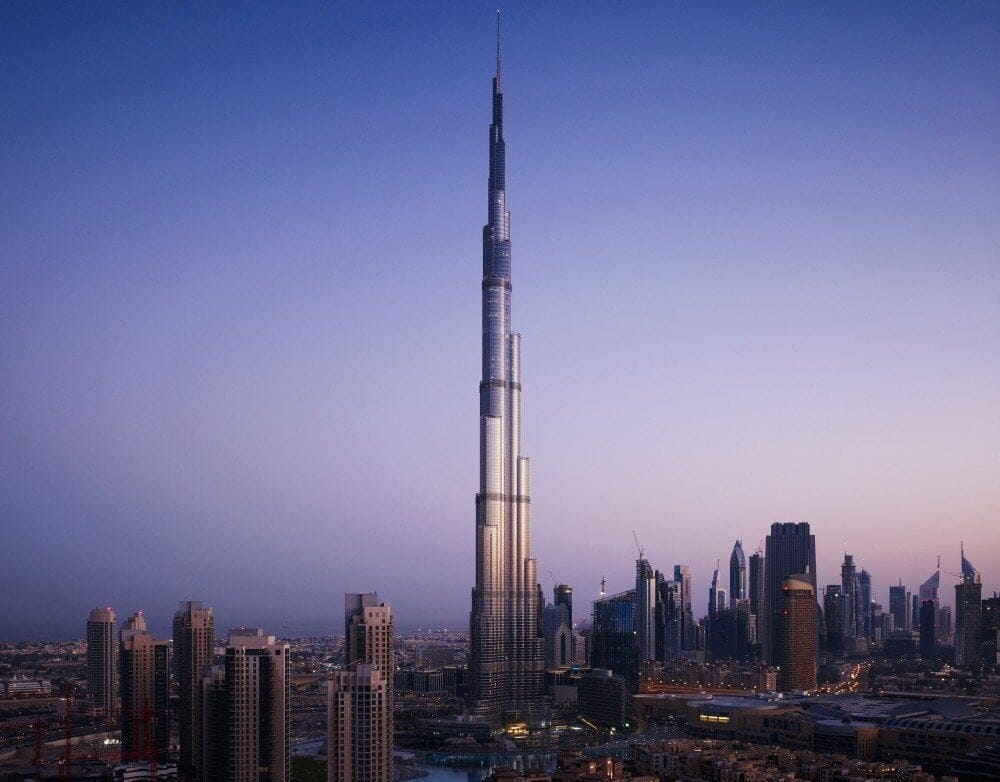
Tall buildings rooted in Chicago
Some of Chicago’s tallest buildings aren’t located in Illinois, or even the United States. That’s because skyscrapers around the world can trace their roots—or rather their grillage—to Chicago.
Some of Chicago’s tallest buildings aren’t located in Illinois, or even the United States. That’s because skyscrapers around the world can trace their roots—or rather their grillage—to Chicago.
by Jacob Huebner and Jessica Cilella
When Chicagoans think about tall buildings, they immediately think of Willis Tower. For nearly 25 years after its completion in 1974, the 110-story building held the title of tallest building in the world. But the quickly changing tall building environment and an ongoing race to build taller has knocked the former Sears Tower out of the top 10 tallest. That doesn’t mean, however, that Chicago has stopped leaving its mark in the world of tall buildings.
The Council on Tall Buildings and Urban Habitat has created internationally recognized height criteria to measure and define tall buildings. “Supertalls” are buildings more than 300 meters (or about 984 feet) high and “megatalls” are buildings more than 600 meters (or about 1,968 feet) high. Building rankings vary depending on the way their height is determined. If the building is measured to the architectural top—the most commonly used ranking—it does not include antennae, signage, flagpoles or other functional-technical equipment.
Despite the fact Chicago buildings no longer stack up to the magnitude of buildings being constructed now, the city still has its impact. The tallest building in the world, Burj Khalifa, was designed by architect Adrian Smith while he was at Skidmore, Owings & Merrill LLP (SOM). Burj Khalifa will get knocked down a notch when Smith’s Chicago-based firm, Adrian Smith + Gordon Gill Architecture, completes Jeddah Tower in Saudi Arabia. The megatall skyscraper is currently under construction and estimated to be complete in 2020.
Other architects, structural engineers, developers and contractors based in Chicago have played important roles in the design and construction of some of the world’s other tallest buildings too. Here’s a look at some of them:

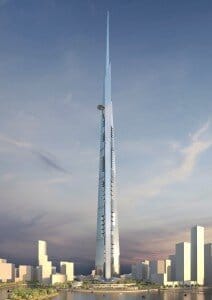
Jeddah Tower
This building is expected to be more slender, and at least 550 feet taller, than Burj Khalifa when complete in 2020. It will be a mixed-use building with a luxury hotel, office space, apartments and condominiums and the world’s highest observatory.
Jeddah, Saudi Arabia, height unknown, likely #1 when complete

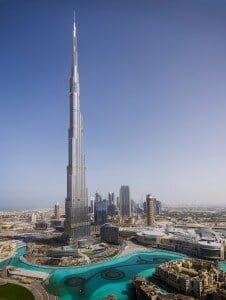
Burj Khalifa
Currently the tallest building in the world, the Burj Khalifa was designed by SOM’s Chicago office, which won the job through an invite-only design competition. SOM is also responsible for some of the tallest skyscrapers located in Chicago, including Willis Tower, Trump Tower and 875 N. Michigan Ave (John Hancock Center).
Dubai, United Arab Emirates, 2,722 feet, #1 tallest

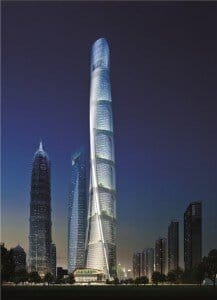
Shanghai Tower
The Chicago office of Gensler was significantly involved in the design of this spiraled building, which pushed Willis Tower off the world’s 10 tallest buildings list when completed in 2015.
Shanghai, China, 2,073 feet, #2 tallest

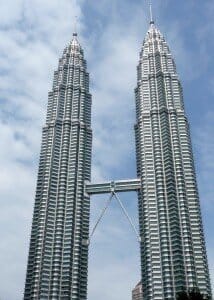
Petronas Twin Towers 1 & 2
Bob Descenza, a retired project manager from Thornton Tomasetti’s Chicago office, led the structural engineering on this project, which was one of the first uses of Chicago high strength concrete technology on a super tall building. A sky bridge at floors 41 and 42 connects the towers and helps minimize their sway.
Kuala Lumpur, Malaysia, 1,483 feet, #11 tallest

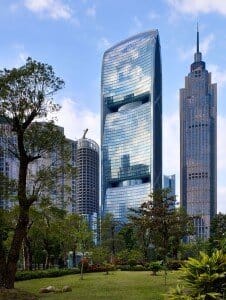
Pearl River Tower
Although Pearl River ranks lower on the list of tallest buildings, its design—by SOM’s Chicago office—is worth noting. The building’s curves direct wind into openings on the mechanical floors, activating turbines that generate energy for the building. SOM also incorporated other green technologies into the 71-story building, including solar panels, a chilled ceiling system, under floor ventilation and daylight harvesting.
Guangzhou, China, 1,015 feet, #82 tallest
